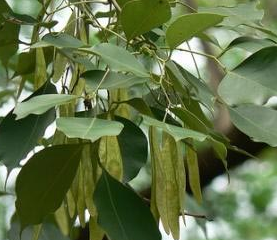The Dalbergia sissoo tree, also known as the Indian rosewood, is a popular choice in Arizona due to the fact that it has a rapid growth rate, produces a big canopy, and provides ample shade throughout the year.
Further, compared to other trees in this environment, the tree is seen as "least messy." Due to its original habitat in the Indian Subcontinent and Southern Iran, this tough deciduous tree is also termed North Indian rosewood. Numerous house developers have planted sissoo trees in housing developments, and householders have added them to their front and back yards for years.
Sissoo trees can grow in nearly any well-drained soil and prefer full sun to partial shade. In order to grow a dense canopy, they require routine deep irrigation. Alkaline soil makes it hard for these trees to take in iron, which causes their leaves to turn yellow.
Fertilizers with magnesium sulphate and iron chelate are effective treatments for this problem. When fertilizing regularly, citrus fertilizer is a great option. Even though it's easy to take care of a sissoo tree, it has a couple of problems that make it harder to take care of your landscape. The tree grows with extensive surface roots, making lawn mowing difficult. If planted too closely, their roots have the ability to lift foundations and pavements. Litter from Sissoo trees is also a problem. The brittle branches and twigs frequently break off, leaving a mess to clean up.
Pros
In India, sissoo is one of the most significant timber trees. It possesses nut-brown heartwood that is extremely stiff, resilient, weighty, and powerful. The wood is utilized in the construction of frames, window panels, flooring, furniture, boats, and wardrobes. Paper can also be made from wood pulp.
The sissoo tree is planted as a roadside shade tree. Because of the microorganisms that fix nitrogen in roots, it nourishes the soil. The quality of the soil is further enhanced by leaves that fall from the tree.

The sissoo tree has medicinal properties as well. It is used to cure a number of ailments in Ayurveda. Properties such as abortifacient, anthelmintic, antipyretic, stimulant, and cough suppressant can be found in both the wood and the bark of the Sissoo tree. Even in Africa, this tree is utilized in the healing of wounds as well as the treatment of gonorrhea.
Several parts of the Sissoo tree have been studied by scientists, and their results back up the traditional medical uses of this tree. The results of these studies demonstrated the tree's anti-inflammatory, antinociceptive (lowering sensitivity to painful stimuli), anti-diabetic, analgesic, and antioxidant properties.
Cons
Sissoos are not a big problem when you have ample room and don't intend to remove them, but when the tree is chopped down, it fights back. Sissoo trees have roots that have a tendency to extend all over the yard in an effort to find a water source. When roots extend quickly and unchecked, they cause harm to a variety of structures, including walls to lift, sidewalks to break, and water pipelines to encroach upon.
When a branch is cut off, the tree sends out new shoots to grow again. In order to remove the stump in an appropriate manner, this new growth needs to be poisoned, which is a procedure that could take several weeks.
Growth Rate
The sissoo tree, or Dalbergia sissoo, is a fast-growing tree that often grows more than 2 feet per year. The tree grows up to 65 feet tall at maturity and has aromatic spring flowers and light green, pointy leaves.
The Sissoo tree is a very drought-tolerant, fast-growing evergreen with softly fluttering leaves. The mature seeds contained within the pods give rise to the rapid proliferation of new trees.
Sissoo trees can grow in practically any well-drained soil and prefer full sun to partial shade. To grow a dense canopy, they require routine deep irrigation. Otherwise, Dalbergia sissoo trees only provide minimal shade.
Root System
Although sissoo tree maintenance is simple, there are a few negatives that add to regular landscaping maintenance. The tree's dense surface roots make it difficult to mow the lawn. If planted too closely, these roots have the potential to lift foundations and structures.
To locate a water supply, Sissoo tree roots frequently invade nearby yards. In addition to cracking pavements, heaving walls, and growing into water lines, the rapid and unchecked expansion of roots causes a great deal of other damage as well.







0 Comments
For comments please reply here.......